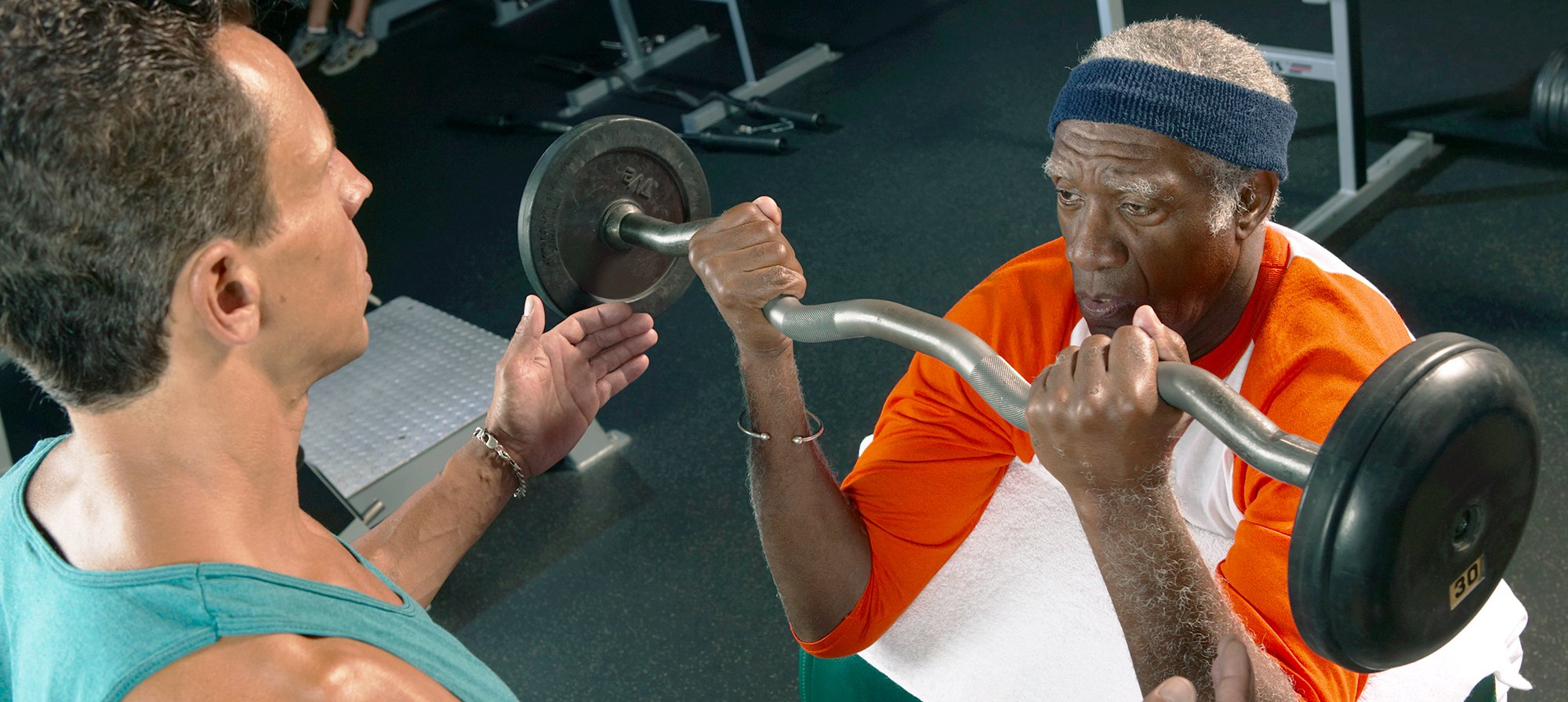Rushing through your reps may mean a shorter workout, but it may not be ideal when strength training. Learn how slowing your reps may offer greater gains.
There’s a slowed-down approach to strength training called “time under tension.” And this technique may ultimately help you get greater muscle mass and strength. The term “time under tension” refers to how long your muscles are contracted during a bodyweight or weightlifting movement.
Research suggests this slow-motion approach may cause greater fatigue by adding to the amount of time your muscles are working. Slowing down during strength training also boosts the release of metabolic substances that help trigger your muscles’ repair and growth process.
You can slow down your reps doing squats, lunges, chest presses, biceps curls, pushups, or just about any other strength training exercise. It’s a great way to take your strength training to the next level without having to add more weight or increase your number of reps.
 What does slow-motion strength training look like?
What does slow-motion strength training look like?
Say you’re doing biceps curls. The more slowly you bend your elbow to bring the weight to your shoulder, the more time you’re working your biceps and other elbow flexor muscles. This is referred to as a concentric contraction. Likewise, the more slowly you lower the weight back down, the longer you’re working that muscle again but differently, with a lengthening contraction called eccentric. Research suggests that slowing down either of these movements, or both, can enhance your strength training gains.
As a test, try doing a handful of biceps curls at your normal pace, maybe 1 to 2 seconds for each movement. Then try doing them more slowly—about 4 to 6 seconds for each movement. Can you feel how much harder you’re working your biceps when you do the curl more slowly?
These 2 distinct movements of concentric and eccentric contractions are done in pretty much all strength training exercises (except for isometric exercises with no movement). You don’t have to slow both of the movements to build more muscle mass and strength. You can just slow one or the other.

Another perk to slowing your reps during strength training
One more good reason to slow down? You can focus more mindfully on your form. Using proper form may also help you get more from your training.

How to increase time under tension while strength training
You may want to work with a certified personal trainer or physical therapist if you’re either new to strength training or thinking of trying this slower approach for the first time. And here are a few tips to keep in mind:
- Mix up your workouts using slow, normal, and faster reps. Don’t slow down your reps for every training session. Do some sessions at your usual pace and then try some at a slower speed and some at a faster pace as you do the concentric contraction.
- Ease into it. You may want to start by slowing only one movement, not both, when doing your reps. Also, start by adding just one or two seconds to your reps rather than 5 or 6 seconds.
- Do enough reps and sets. Do enough reps in each set until you feel your muscles tire. And while doing one set is great, aim for 2 to 3 sets, if you can. This will help you build even more muscle mass and strength.
- Rest between sets. Say you do a set of 10 to 12 slow-motion reps. Then make sure to rest for 1 to 2 minutes between each set. You’ll also want to take a day of rest between strength training sessions. So, if you work your upper body one day, work your lower body the next.
Think about giving this slower approach to strength training a try. True, it might mean slightly longer workouts. But the extra time may be well worth it.
While you’re at it, make sure you’re getting ample sleep to help with muscle recovery. And eat a nutritious diet of whole foods with plenty of carbs and protein to fuel your workouts and help your muscles recover and grow.
Check out 4 post-workout tips to help bolster your muscle recovery.
Not a Silver&Fit® member? Learn more about everything the program has to offer, including more helpful healthy living tips like this, here on our website.
This information is not intended to take the place of regular medical care or advice. Please check with your doctor before using this information or beginning any self-care program. Images used for this article do not depict any members of the Silver&Fit Program.
References
Academy of Nutrition and Dietetics. (2023, August 22). How to fuel your workout.
https://www.eatright.org/fitness/physical-activity/exercise-nutrition/how-to-fuel-your-workout
Borde, R., Hortobagyi, T., & Granacher, U. (2015, September 29). Dose-response relationships of resistance training in healthy adults: A systematic review and meta-analysis. Sports Medicine, 45(12), 1693–1720. https://www.ncbi.nlm.nih.gov/pmc/articles/PMC4656698/
Breus, M. (2024, January 24). Top 5 exercise tips for better sleep. The Sleep Doctor. https://sleepdoctor.com/pages/health/exercise
Burd, N. A., Andrews, R. J., West, D. W. D., Little, J. P., Cochran, A. J. R., Hector, A. J., Cashback, J. G. A., Gibala, M. J., Potvin, J. R., Baker, S. K., & Phillips, S. M. (2012, January 15). Muscle time under tension during resistance exercise stimulates differential muscle protein sub-fractional synthetic responses in men. The Journal of Physiology, 590(Pt 2), 351–362. https://www.ncbi.nlm.nih.gov/pmc/articles/PMC3285070/
Jager, R., Kerksick, C. M., Campbell, B. I., Cribb, P. J., Wells, S. D., Skwiat, T. M., . . . Antonio, J. (2017). International society of sports nutrition position stand: Protein and exercise. Journal of the International Society of Sports Nutrition, 14, 20. doi:10.1186/s12970-017-0177-8
Jo, S. (2014, September 24). The do’s and don’ts of building muscle. American Council on Exercise. https://www.acefitness.org/resources/everyone/blog/5049/the-do-s-and-don-ts-of-building-muscle/
Martins-Costa, H. C., Lacerda, L. T., Diniz, R. C. R., Lima, F. V., Andrade, A. G. P., Peixoto, G. H., Gomes, M. C., Lanza, M. B., Bemben, M. G., & Chagas, M. H. (2022, July). Equalization of training protocols by time under tension determines the magnitude of changes in strength and muscle hypertrophy. The Journal of Strength and Conditioning Research, 36(7), 1770-1780. doi:10.1519/JSC.0000000000004004
McCall, P. (2015, September 22). 7 techniques for promoting muscle growth. American Council on Exercise. https://www.acefitness.org/resources/pros/expert-articles/5661/7-techniques-for-promoting-muscle-growth/
This article was written by Gail Olson, edited by Jason Nielsen, and clinically reviewed by Jaynie Bjornaraa, PhD, MPH, PT, LAT, ATC, CSCS, CSPS, on July 28, 2025.





